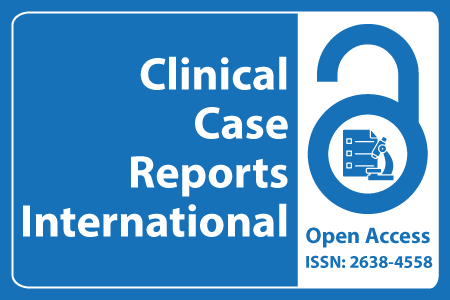
Journal Basic Info
- Impact Factor: 0.285**
- H-Index: 6
- ISSN: 2638-4558
- DOI: 10.25107/2638-4558
Major Scope
- Internal Medicine
- Biochemistry and Biostatistics
- Gastroenterology
- Inflammation
- Pediatrics
- Women’s Health Care
- Atherosclerosis
- Pharmacology and Therapeutics
Abstract
Citation: Clin Case Rep Int. 2022;6(1):1379.DOI: 10.25107/2638-4558.1379
Aseptic Meningitis after Spinal Anesthesia: Diagnostic Dilemma for Anesthetist, Surgeon, and Intensivist Alike!
Ayesha A, Gursharan S, Santvana K, Sahil D, Manoj KSk, Shailly K, Sushil G and Harish CS
Department of Anesthesia and Intensive Care, VMMC and Safdarjung Hospital, India
*Correspondance to: Santvana Kohli
PDF Full Text Case Report | Open Access
Abstract:
Spinal anesthesia is a commonly performed anesthetic procedure for inguinal, gynecological, obstetric and lower limb surgical/orthopedic procedures. Neurological complications after an uneventful spinal anesthesia and surgery are infrequent and dangerous. One such complication is meningitis or meningoencephalitis, which may be infectious or non-infectious in etiology. One subset of non-infectious meningitis is Drug-Induced Aseptic Meningitis (DIAM). DIAM may be difficult to distinguish from bacterial meningitis by clinical picture (fever, nuchal rigidity, headache, disorientation) and laboratory investigations. CSF analysis may show polymorphic picture on cytology with increased protein levels and normal to decreased glucose levels. CSF cultures are invariable negative in DIAM. Antibiotics, if started empirically, may be stopped after a diagnosis of DIAM has been made. Bupivacaine has been frequently implicated as a causative agent for postspinal anesthesia DIAM. The condition is self-limiting with spontaneous and complete recovery. We present a case of an ASA (American Society of Anesthesiologists) Grade I patient posted for arthroscopic knee surgery under spinal anesthesia. The patient developed meningeal signs in postoperative period and was admitted to ICU. DIAM seemed probable after eliminating bacterial meningitis as a probable diagnosis by negative CSF culture. The patient showed a complete recovery within a few days and was discharged uneventfully.
Keywords:
Aseptic meningitis; Bupivacaine; DIAM; Intensive care; Neck rigidity; Anesthesia; Subarachnoid block
Cite the Article:
Ayesha A, Gursharan S, Santvana K, Sahil D, Manoj KSk, Shailly K, et al. Aseptic Meningitis after Spinal Anesthesia: Diagnostic Dilemma for Anesthetist, Surgeon, and Intensivist Alike!. Clin Case Rep Int. 2022; 6: 1379.













